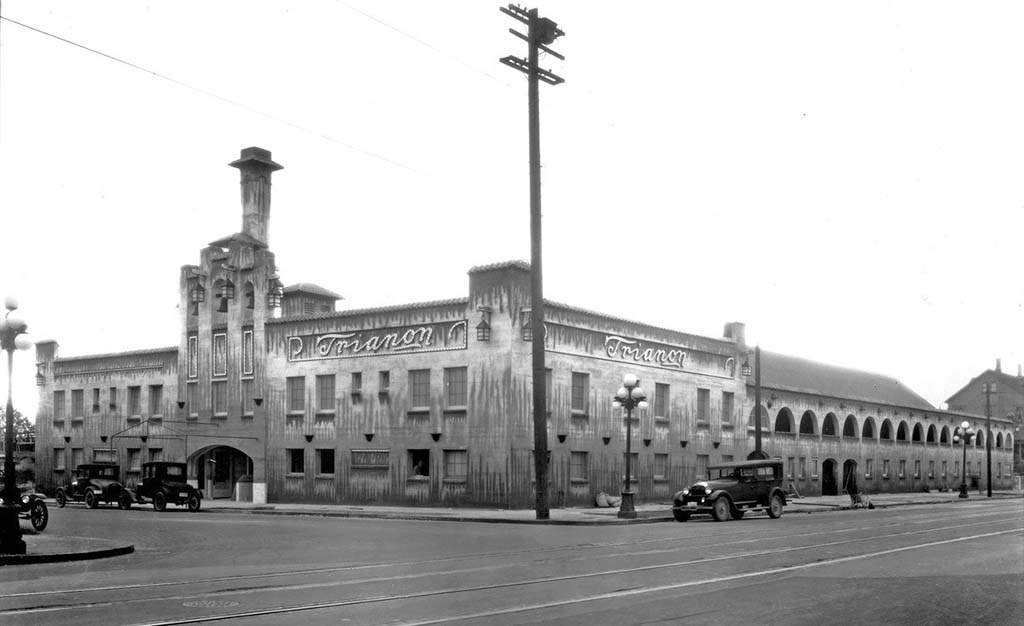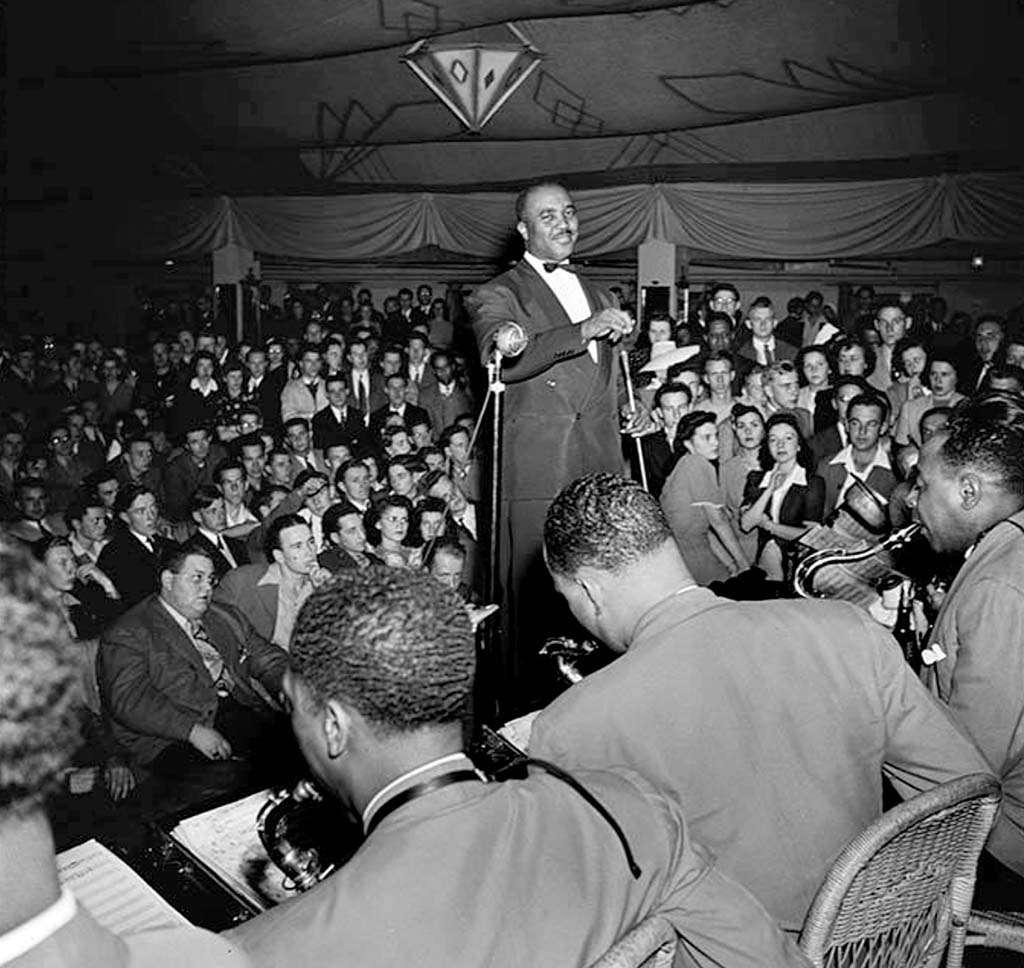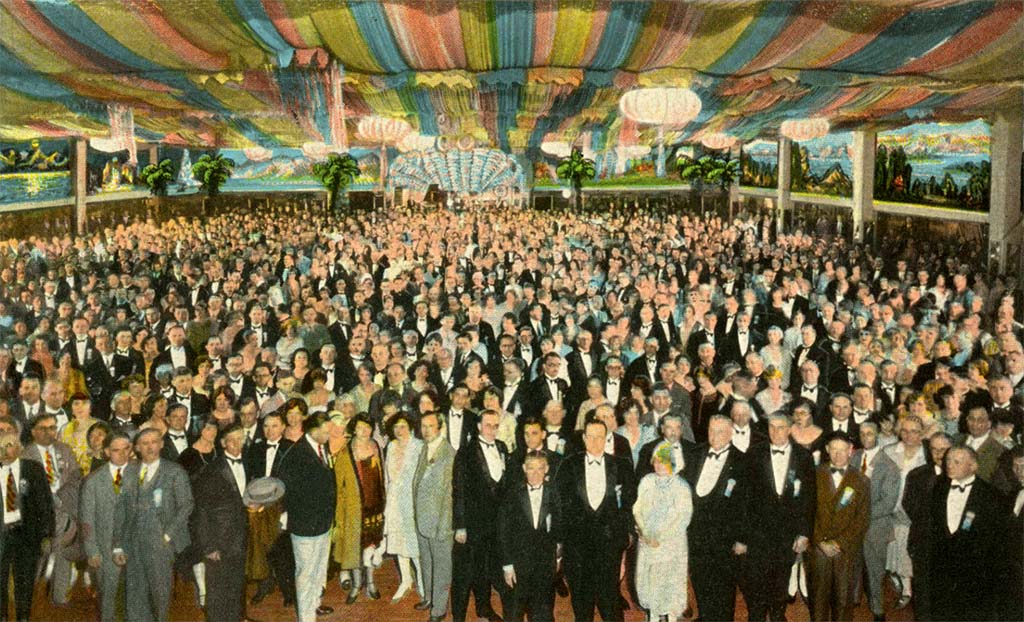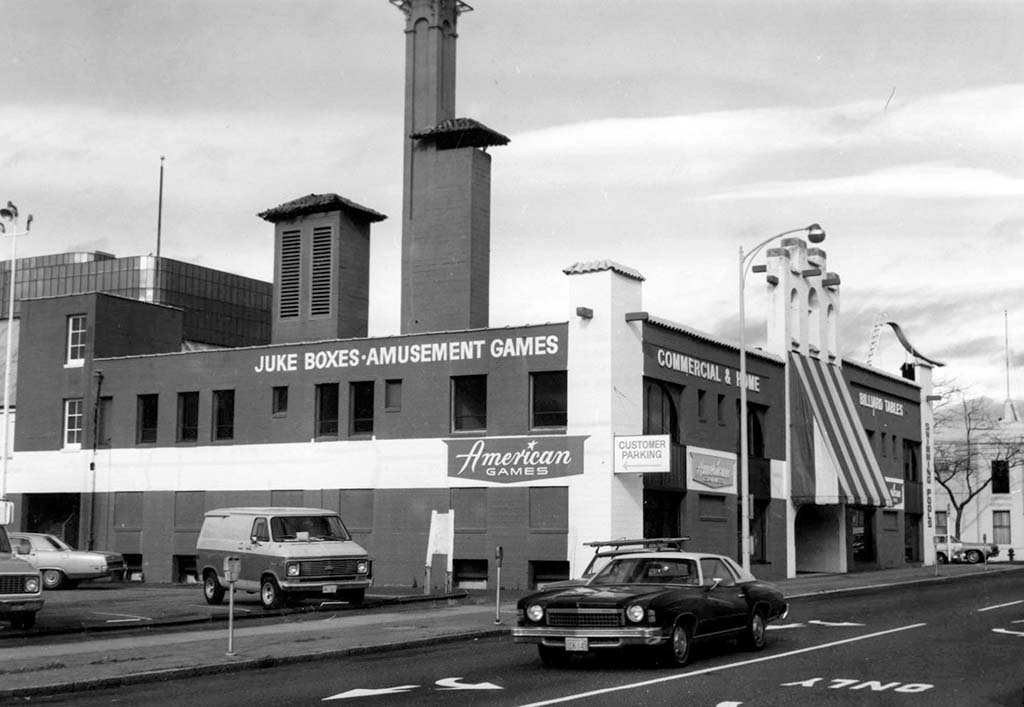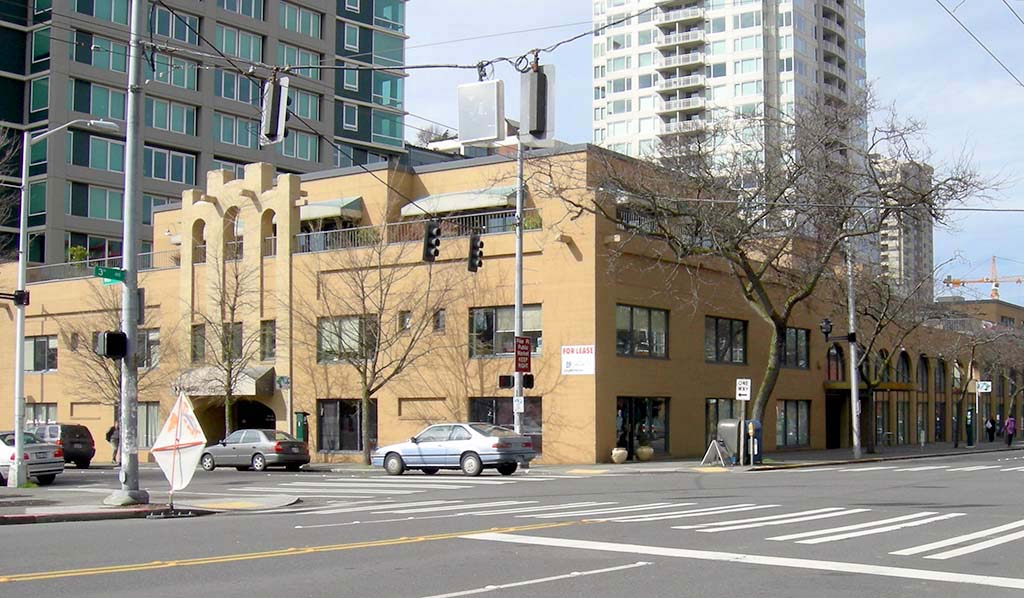-
Trianon Ballroom
218 Wall Street
218 Wall Street
Hyped by its co-owner, hotelier John Savage, as the largest dancehall west of Chicago when it opened on May 20, 1927, the Trianon Ballroom had an outsized impact on Seattle during its three decades of musical activity. Designed by Warren H. Milner, the Mediterranean-themed building (with a Mission-style parapet tower) covered half of a city block. The interior boasted a clamshell bandstand and seating for 800 around a dance floor that could accommodate more than 5,000 revelers. Attendees on opening night thrilled to the sounds of co-owner Herb Wiedoeft and his Brunswick Recording Orchestra.
Although the hall booked top-tier touring dance bands, including those led by Duke Ellington and Lionel Hampton, Blacks were denied access until leaders in Seattle’s Black community applied public pressure and the management agreed to schedule a separate dance by Hampton. Henceforth Monday nights were dedicated to dances for the Black community. Robert “Bumps” Blackwell and his Junior Band, which included teenage trumpeter Quincy Jones, gigged at the Trianon, as did the Maxin Trio, led by teenage pianist/singer Ray Charles.
Savage closed the ballroom in 1956, and soon the Trianon was hosting wrestling matches. It then housed an inglorious Gov-Mart discount store, and finally limped into the 1980s before it was remodeled into shops and offices.
Return to 2nd Avenue and continue south to our next stop.
